AR
-
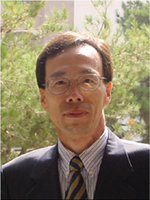 KAIST Research Team Unveils Method to Fabricate Photonic Janus Balls
A research team led by Prof. Seung-Man Yang of the Department of Chemical and Biomolecular Engineering has found a method to fabricate photonic Janus balls with isotropic structural colors.
The finding draws attention since the newly-fabricated photonic balls may prove useful pigments for the realization of e-paper or flexible electronic displays.
The breakthrough was published in the Nov. 3 edition of the science journal "Advanced Materials." The Nov. 6 issue of "Nature" also featured it as one of the research highlights under the title of "Future Pixels."
Prof. Yang"s research team found that tiny marbles, black on one side and colored on the other, can be made by "curing" suspensions of silica particles with an ultraviolet lamp. When an electric field is applied, the marbles line up so that the black sides all face upwards, which suggests they may prove useful pigments for flexible electronic displays.
The researchers suspended a flow of carbon-black particles mixed with silica and a transparent or colored silica flow in a resin that polymerizes under ultraviolet light. They then passed the mixture through a tiny see-through tube. The light solidified the silica and resin as balls with differently colored regions, each about 200 micrometers in diameter.
Over the last decades, the development of industrial platforms to artificially fabricate structural color pigments has been a pressing issue in the research areas of materials science and optics. Prof. Yang, who is also the director of the National Creative Research Initiative Center for Integrated Optofluidic Systems, has led the researches focused on fabrication of functional nano-materials through the process of assembling nano-building blocks into designed patterns.
The "complementary hybridization of optical and fluidic devices for integrated optofluidic systems" research was supported by a grant from the Creative Research Initiative Program of the Ministry of Education, Science & Technology.
2008.11.12 View 15979
KAIST Research Team Unveils Method to Fabricate Photonic Janus Balls
A research team led by Prof. Seung-Man Yang of the Department of Chemical and Biomolecular Engineering has found a method to fabricate photonic Janus balls with isotropic structural colors.
The finding draws attention since the newly-fabricated photonic balls may prove useful pigments for the realization of e-paper or flexible electronic displays.
The breakthrough was published in the Nov. 3 edition of the science journal "Advanced Materials." The Nov. 6 issue of "Nature" also featured it as one of the research highlights under the title of "Future Pixels."
Prof. Yang"s research team found that tiny marbles, black on one side and colored on the other, can be made by "curing" suspensions of silica particles with an ultraviolet lamp. When an electric field is applied, the marbles line up so that the black sides all face upwards, which suggests they may prove useful pigments for flexible electronic displays.
The researchers suspended a flow of carbon-black particles mixed with silica and a transparent or colored silica flow in a resin that polymerizes under ultraviolet light. They then passed the mixture through a tiny see-through tube. The light solidified the silica and resin as balls with differently colored regions, each about 200 micrometers in diameter.
Over the last decades, the development of industrial platforms to artificially fabricate structural color pigments has been a pressing issue in the research areas of materials science and optics. Prof. Yang, who is also the director of the National Creative Research Initiative Center for Integrated Optofluidic Systems, has led the researches focused on fabrication of functional nano-materials through the process of assembling nano-building blocks into designed patterns.
The "complementary hybridization of optical and fluidic devices for integrated optofluidic systems" research was supported by a grant from the Creative Research Initiative Program of the Ministry of Education, Science & Technology.
2008.11.12 View 15979 -
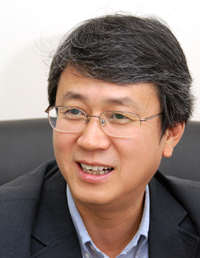 KAIST Team Identifies Nano-scale Origin of Toughness in Rare Earth-added Silicon Carbide
A research team led by Prof. Do-Kyung Kim of the Department of Materials Science and Engineering of KAIST has identified the nano-scale origin of the toughness in rare-earth doped silicon carbide (RE-SiC), university sources said on Monday (Oct. 6).
The research was conducted jointly with a U.S. team headed by Prof. R. O. Ritchie of the Department of Materials Science and Engineering, University of California, Berkeley.
The findings were carried in the online edition of Nano Letters published by the American Chemical Association.
Silicon carbide, a ceramic material known to be one of the hardest substances, are potential candidate materials for many ultrahigh-temperature structural applications. For example, if SiC, instead of metallic alloys, is used in gas-turbine engines for power generation and aerospace applications, operating temperatures of many hundred degrees higher can be obtained with a consequent dramatic increase in thermodynamic efficiency and reduced fuel consumption. However, the use of such ceramic materials has so far been severely limited since the origin of the toughness in RE-SiC remained unknown thus far.
In order to investigate the origin of the toughness in RE-SiC, the researchers attempted to examine the mechanistic nature of the cracking events, which they found to occur precisely along the interface between SiC grains and the nano-scale grain-boundary phase, by using ultrahigh-resolution transmission electron microscopy and atomic-scale spectroscopy. The research found that for optimal toughness, the relative elastic modulus across the grain-boundary phase and the interfacial fracture toughness are the most critical material parameters; both can be altered with appropriate choice of rare-earth elements.
In addition to identifying the nano-scale origin of the toughness in RE-SiC, the findings also contributed to precisely predicting how the use of various rare-earth elements lead to difference in toughness.
University sources said that the findings will significantly advance the date when RE-SiC will replace metallic alloys in gas-turbine engines for power generation and aerospace applications.
2008.10.08 View 16921
KAIST Team Identifies Nano-scale Origin of Toughness in Rare Earth-added Silicon Carbide
A research team led by Prof. Do-Kyung Kim of the Department of Materials Science and Engineering of KAIST has identified the nano-scale origin of the toughness in rare-earth doped silicon carbide (RE-SiC), university sources said on Monday (Oct. 6).
The research was conducted jointly with a U.S. team headed by Prof. R. O. Ritchie of the Department of Materials Science and Engineering, University of California, Berkeley.
The findings were carried in the online edition of Nano Letters published by the American Chemical Association.
Silicon carbide, a ceramic material known to be one of the hardest substances, are potential candidate materials for many ultrahigh-temperature structural applications. For example, if SiC, instead of metallic alloys, is used in gas-turbine engines for power generation and aerospace applications, operating temperatures of many hundred degrees higher can be obtained with a consequent dramatic increase in thermodynamic efficiency and reduced fuel consumption. However, the use of such ceramic materials has so far been severely limited since the origin of the toughness in RE-SiC remained unknown thus far.
In order to investigate the origin of the toughness in RE-SiC, the researchers attempted to examine the mechanistic nature of the cracking events, which they found to occur precisely along the interface between SiC grains and the nano-scale grain-boundary phase, by using ultrahigh-resolution transmission electron microscopy and atomic-scale spectroscopy. The research found that for optimal toughness, the relative elastic modulus across the grain-boundary phase and the interfacial fracture toughness are the most critical material parameters; both can be altered with appropriate choice of rare-earth elements.
In addition to identifying the nano-scale origin of the toughness in RE-SiC, the findings also contributed to precisely predicting how the use of various rare-earth elements lead to difference in toughness.
University sources said that the findings will significantly advance the date when RE-SiC will replace metallic alloys in gas-turbine engines for power generation and aerospace applications.
2008.10.08 View 16921 -
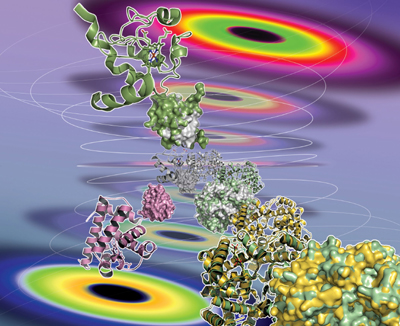 KAIST Professor Exposes Structural Dynamics of Protein in Solution
-- Dr. Hyot-Cherl Ihee"s 3-Year Research Is Valuable in Pharmaceutical Application
Prof. Hyot-Cherl Ihee and his team at the Department of Chemistry, KAIST, has successfully unveiled the structural dynamics of protein in solution as a result of more than three years" research work.
Nature Methods, a sister publication of the authoritative science magazine Nature, published the treatise, titled "Tracking the structural dynamics of proteins in solution using time-resolved wide-angle X-ray scattering" in its Sept. 22 online edition. The research paper will be carried in the magazine"s printed version in its October edition, according to Dr. Lee who is its correspondence author.
In May 2005, Prof. Ihee successfully photographed the structural dynamics of protein in solid state and his findings were published in the Proceedings of National Academy of Science of the United States. As protein normally exists in human body in solution, not in solid state, he directed his research to developing the technology to capture protein"s dynamics in resolved state.
In July that year, Prof. Ihee succeeded in measuring the structural changes of simple organic molecules in real time. He further developed the technology to uncover the structural dynamics of hemoglobin, myoglobin and cytochrome C.
Prof. Ihee"s research, helped with the Education-Science-Technology Ministry"s Creative Research Promotion Fund, can be applied to new pharmaceutical development projects as well as nanotechnology development, according to KAIST officials.
Prof. Ihee who earned his doctorate at California Institute of Technology in 1994 began teaching at KAIST in 2003. He won the Young Scientist Award given by the Korean government in 2006.
2008.09.22 View 15101
KAIST Professor Exposes Structural Dynamics of Protein in Solution
-- Dr. Hyot-Cherl Ihee"s 3-Year Research Is Valuable in Pharmaceutical Application
Prof. Hyot-Cherl Ihee and his team at the Department of Chemistry, KAIST, has successfully unveiled the structural dynamics of protein in solution as a result of more than three years" research work.
Nature Methods, a sister publication of the authoritative science magazine Nature, published the treatise, titled "Tracking the structural dynamics of proteins in solution using time-resolved wide-angle X-ray scattering" in its Sept. 22 online edition. The research paper will be carried in the magazine"s printed version in its October edition, according to Dr. Lee who is its correspondence author.
In May 2005, Prof. Ihee successfully photographed the structural dynamics of protein in solid state and his findings were published in the Proceedings of National Academy of Science of the United States. As protein normally exists in human body in solution, not in solid state, he directed his research to developing the technology to capture protein"s dynamics in resolved state.
In July that year, Prof. Ihee succeeded in measuring the structural changes of simple organic molecules in real time. He further developed the technology to uncover the structural dynamics of hemoglobin, myoglobin and cytochrome C.
Prof. Ihee"s research, helped with the Education-Science-Technology Ministry"s Creative Research Promotion Fund, can be applied to new pharmaceutical development projects as well as nanotechnology development, according to KAIST officials.
Prof. Ihee who earned his doctorate at California Institute of Technology in 1994 began teaching at KAIST in 2003. He won the Young Scientist Award given by the Korean government in 2006.
2008.09.22 View 15101 -
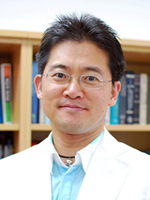 KAIST Professor Finds Paradox in Human Behaviors on Road
-Strange as it might seem, closing roads can cut delays
A new route opened to ease traffic jam, but commuting time has not been reduced.Conversely, motorists reached their destinations in shorter times after a big street was closed. These paradoxical phenomena are the result of human selfishness, according to recent findings of a research team led by a KAIST physics professor.
Prof. Ha-Woong Jeong, 40, at the Department of Physics, conducted a joint research with a team from Santa Fe Institute of the U.S. to analyze the behaviors of drivers in Boston, New York and London. Their study found that when individual drivers, fed with traffic information via various kinds of media, try to choose the quickest route, it can cause delays for others and even worsen congestion.
Prof. Jeong and his group"s study will be published in the Sept. 18 edition of the authoritative Physical Review Letters. The London-based Economist magazine introduced Prof. Jeong"s finding in its latest edition.
Prof. Jeong, a pioneer in the study of "complex system," has published more than 70 research papers in the world"s leading science journals, including Nature, PNAS and Physical Review Letters. "Initially, my study was to reduce annoyance from traffic jam during rush hours," Prof. Jeong said. "Ultimately, it is purposed to eliminate inefficiency located in various corners of social activities, with the help of the network science."
The Economist article read (in part):
"...when individual drivers each try to choose the quickest route it can cause delays for others and even increase hold-ups in the entire road network.
"The physicists give a simplified example of how this can happen: trying to reach a destination either by using a short but narrow bridge or a longer but wide motorway. In their hypothetical case, the combined travel time of all the drivers is minimized if half use the bridge and half the motorway. But that is not what happens. Some drivers will switch to the bridge to shorten their commute, but as the traffic builds up there the motorway starts to look like a better bet, so some switch back. Eventually the traffic flow on the two routes settles into what game theory calls a Nash equilibrium, named after John Nash, the mathematician who described it. This is the point where no individual driver could arrive any faster by switching routes.
"The researchers looked at how this equilibrium could arise if travelling across Boston from Harvard Square to Boston Common. They analysed 246 different links in the road network that could be used for the journey and calculated traffic flows at different volumes to produce what they call a “price of anarchy” (POA). This is the ratio of the total cost of the Nash equilibrium to the total cost of an optimal traffic flow directed by an omniscient traffic controller. In Boston they found that at high traffic levels drivers face a POA which results in journey times 30% longer than if motorists were co-ordinated into an optimal traffic flow. Much the same thing was found in London (a POA of up to 24% for journeys between Borough and Farringdon Underground stations) and New York (a POA of up to 28% from Washington Market Park to Queens Midtown Tunnel).
"Modifying the road network could reduce delays. And contrary to popular belief, a simple way to do that might be to close certain roads. This is known as Braess’s paradox, after another mathematician, Dietrich Braess, who found that adding extra capacity to a network can sometimes reduce its overall efficiency.
"In Boston the group looked to see if the paradox could be created by closing any of the 246 links. In 240 cases their analysis showed that a closure increased traffic problems. But closing any one of the remaining six streets reduced the POA of the new Nash equilibrium. Much the same thing was found in London and New York. More work needs to be done to understand these effects, say the researchers. But even so, planners should note that there is now evidence that even a well intentioned new road may make traffic jams worse."
2008.09.18 View 15690
KAIST Professor Finds Paradox in Human Behaviors on Road
-Strange as it might seem, closing roads can cut delays
A new route opened to ease traffic jam, but commuting time has not been reduced.Conversely, motorists reached their destinations in shorter times after a big street was closed. These paradoxical phenomena are the result of human selfishness, according to recent findings of a research team led by a KAIST physics professor.
Prof. Ha-Woong Jeong, 40, at the Department of Physics, conducted a joint research with a team from Santa Fe Institute of the U.S. to analyze the behaviors of drivers in Boston, New York and London. Their study found that when individual drivers, fed with traffic information via various kinds of media, try to choose the quickest route, it can cause delays for others and even worsen congestion.
Prof. Jeong and his group"s study will be published in the Sept. 18 edition of the authoritative Physical Review Letters. The London-based Economist magazine introduced Prof. Jeong"s finding in its latest edition.
Prof. Jeong, a pioneer in the study of "complex system," has published more than 70 research papers in the world"s leading science journals, including Nature, PNAS and Physical Review Letters. "Initially, my study was to reduce annoyance from traffic jam during rush hours," Prof. Jeong said. "Ultimately, it is purposed to eliminate inefficiency located in various corners of social activities, with the help of the network science."
The Economist article read (in part):
"...when individual drivers each try to choose the quickest route it can cause delays for others and even increase hold-ups in the entire road network.
"The physicists give a simplified example of how this can happen: trying to reach a destination either by using a short but narrow bridge or a longer but wide motorway. In their hypothetical case, the combined travel time of all the drivers is minimized if half use the bridge and half the motorway. But that is not what happens. Some drivers will switch to the bridge to shorten their commute, but as the traffic builds up there the motorway starts to look like a better bet, so some switch back. Eventually the traffic flow on the two routes settles into what game theory calls a Nash equilibrium, named after John Nash, the mathematician who described it. This is the point where no individual driver could arrive any faster by switching routes.
"The researchers looked at how this equilibrium could arise if travelling across Boston from Harvard Square to Boston Common. They analysed 246 different links in the road network that could be used for the journey and calculated traffic flows at different volumes to produce what they call a “price of anarchy” (POA). This is the ratio of the total cost of the Nash equilibrium to the total cost of an optimal traffic flow directed by an omniscient traffic controller. In Boston they found that at high traffic levels drivers face a POA which results in journey times 30% longer than if motorists were co-ordinated into an optimal traffic flow. Much the same thing was found in London (a POA of up to 24% for journeys between Borough and Farringdon Underground stations) and New York (a POA of up to 28% from Washington Market Park to Queens Midtown Tunnel).
"Modifying the road network could reduce delays. And contrary to popular belief, a simple way to do that might be to close certain roads. This is known as Braess’s paradox, after another mathematician, Dietrich Braess, who found that adding extra capacity to a network can sometimes reduce its overall efficiency.
"In Boston the group looked to see if the paradox could be created by closing any of the 246 links. In 240 cases their analysis showed that a closure increased traffic problems. But closing any one of the remaining six streets reduced the POA of the new Nash equilibrium. Much the same thing was found in London and New York. More work needs to be done to understand these effects, say the researchers. But even so, planners should note that there is now evidence that even a well intentioned new road may make traffic jams worse."
2008.09.18 View 15690 -
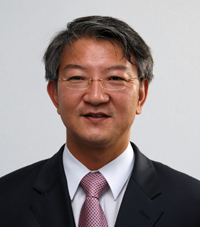 Prof. Sang-Yup Lee Receives Merck Award for Metabolic Engineering
Prof. Sang-Yup Lee of KAIST"s Department of Chemical and Biomolecular Engineering has been chosen as the winner of the 2008 Merck Award for Metabol;ic Engineering established by the world"s leading pharmaceutical and chemical company Merck, KAIST officials said Tuesday, Sept. 16.
The Distinguished Professor of KAIST and LG Chem Chair Professor will receive the award on Sept. 18 during the 7th Metabolic Engineering convention now underway at Puerto Vallarta, Mexico. Prof. Lee will give a commemorative lecture, titled "Systems Metabolic Engineering for Chemicals," at the biannual academic conference. Prof. Lee is the fourth to win the coveted award which is given to the world"s top expert in metabolic engineering with outstanding achievements in the field.
Prof. Lee, 44, who graduated from Seoul National University and earned his master"s and doctoral degrees in chemical engineering from Northwestern University of the United States, is now the dean of the College of Life Science and Bioengineering, KAIST. Since 1994, he has served as the head of the Metabolic and Biomolecular Engineering National Research Laboratory, director of the BioProcess Engineering Center, Director of the Bioinformatics Research Center and Co-Director of the Institute for the BioCentury in KAIST.
Prof. Lee said he was receiving the Merck award "as a representative of KAIST graduates, students and researchers" who have worked with him at the Metabolic Engineering Lab. He added he was happy to see the outcome of bioengineering development projects supported by the Ministry of Education, Science and Technology over the past years was now being recognized by the world"s leading scientific society with the Merck Award.
Metabolic engineering, the art of optimizing genetic and regulatory processes within cells to increase the cell"s production of a certain substance, develops technologies that hold the key to the resolution of the world"s energy, food and environmental problems. The indispensible technology in bioengineering can be applied to the production of biomass to obtain alternative fuel.
Prof. Lee has actively participated in publishing such academic periodicals as Biotechnology Journal (as chief editor), Biotechnology and Bioengineering (deputy editor) and Metabolic Engineering (a member of the editorial committee).
2008.09.17 View 16533
Prof. Sang-Yup Lee Receives Merck Award for Metabolic Engineering
Prof. Sang-Yup Lee of KAIST"s Department of Chemical and Biomolecular Engineering has been chosen as the winner of the 2008 Merck Award for Metabol;ic Engineering established by the world"s leading pharmaceutical and chemical company Merck, KAIST officials said Tuesday, Sept. 16.
The Distinguished Professor of KAIST and LG Chem Chair Professor will receive the award on Sept. 18 during the 7th Metabolic Engineering convention now underway at Puerto Vallarta, Mexico. Prof. Lee will give a commemorative lecture, titled "Systems Metabolic Engineering for Chemicals," at the biannual academic conference. Prof. Lee is the fourth to win the coveted award which is given to the world"s top expert in metabolic engineering with outstanding achievements in the field.
Prof. Lee, 44, who graduated from Seoul National University and earned his master"s and doctoral degrees in chemical engineering from Northwestern University of the United States, is now the dean of the College of Life Science and Bioengineering, KAIST. Since 1994, he has served as the head of the Metabolic and Biomolecular Engineering National Research Laboratory, director of the BioProcess Engineering Center, Director of the Bioinformatics Research Center and Co-Director of the Institute for the BioCentury in KAIST.
Prof. Lee said he was receiving the Merck award "as a representative of KAIST graduates, students and researchers" who have worked with him at the Metabolic Engineering Lab. He added he was happy to see the outcome of bioengineering development projects supported by the Ministry of Education, Science and Technology over the past years was now being recognized by the world"s leading scientific society with the Merck Award.
Metabolic engineering, the art of optimizing genetic and regulatory processes within cells to increase the cell"s production of a certain substance, develops technologies that hold the key to the resolution of the world"s energy, food and environmental problems. The indispensible technology in bioengineering can be applied to the production of biomass to obtain alternative fuel.
Prof. Lee has actively participated in publishing such academic periodicals as Biotechnology Journal (as chief editor), Biotechnology and Bioengineering (deputy editor) and Metabolic Engineering (a member of the editorial committee).
2008.09.17 View 16533 -
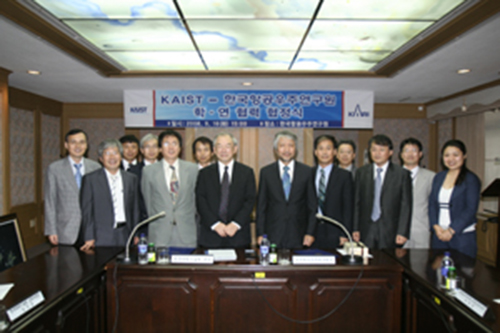 KAIST, KARI to Conduct Joint Research, Exchange Tech Manpower
KAIST and the Korea Aerospace Research Institute (KARI) have agreed to conduct joint researches and exchange technical personnel in order to spur research activities on artificial satellite and other aerospace technology, KAIST announced Wednesday, Sept. 17.
An MOU was signed in a ceremony at the KARI Tuesday, attended by senior officials of the two institutions which both are located in the Daedeok Technopolis in Daejeon City.
Researchers from KARI will participate in KAIST"s interdisciplinary project of "Space Exploratory Engineering" and the two organizations will also jointly take part in the International Lunar Network (ILN), an international moon exploration program, to accelerate development of space technology in Korea.
As a result of the tieup, Dr. Lee So-yeon, Korea"s first astronaut who lived in space for a week aboard a Russian spacecraft this year, will be able to teach and conduct research at KAIST as an adjunct professor. Lee earned her doctorate from KAIST.
2008.09.17 View 16588
KAIST, KARI to Conduct Joint Research, Exchange Tech Manpower
KAIST and the Korea Aerospace Research Institute (KARI) have agreed to conduct joint researches and exchange technical personnel in order to spur research activities on artificial satellite and other aerospace technology, KAIST announced Wednesday, Sept. 17.
An MOU was signed in a ceremony at the KARI Tuesday, attended by senior officials of the two institutions which both are located in the Daedeok Technopolis in Daejeon City.
Researchers from KARI will participate in KAIST"s interdisciplinary project of "Space Exploratory Engineering" and the two organizations will also jointly take part in the International Lunar Network (ILN), an international moon exploration program, to accelerate development of space technology in Korea.
As a result of the tieup, Dr. Lee So-yeon, Korea"s first astronaut who lived in space for a week aboard a Russian spacecraft this year, will be able to teach and conduct research at KAIST as an adjunct professor. Lee earned her doctorate from KAIST.
2008.09.17 View 16588 -
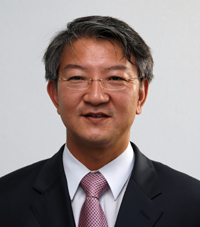 Prof. Lee Appointed to Advisory Board of the U.S. Joint BioEnergy Institute
Prof. Sang-Yup Lee of the Department of Chemical and Biomolecular Engineering, KAIST, has been appointed as a member of the scientific advisory board of the Joint BioEnergy Institute under the wing of the U.S. Department of Energy, university authorities said on Monday (Aug. 4).
The Joint BioEnergy Institute (JBEI) is a scientific partnership in the San Francisco Bay area, California, led by Lawrence Berkeley National Laboratory (Berkeley Lab). Its partner organizations include the Sandia National Laboratories, the University of California in Berkeley, UC Davis, the Carnegie Institution for Science and the Lawrence Livermore National Laboratory.
JBEI
2008.08.07 View 13912
Prof. Lee Appointed to Advisory Board of the U.S. Joint BioEnergy Institute
Prof. Sang-Yup Lee of the Department of Chemical and Biomolecular Engineering, KAIST, has been appointed as a member of the scientific advisory board of the Joint BioEnergy Institute under the wing of the U.S. Department of Energy, university authorities said on Monday (Aug. 4).
The Joint BioEnergy Institute (JBEI) is a scientific partnership in the San Francisco Bay area, California, led by Lawrence Berkeley National Laboratory (Berkeley Lab). Its partner organizations include the Sandia National Laboratories, the University of California in Berkeley, UC Davis, the Carnegie Institution for Science and the Lawrence Livermore National Laboratory.
JBEI
2008.08.07 View 13912 -
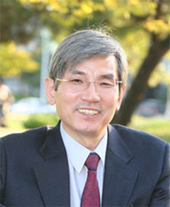 Storing Stably Hydrogen Atoms in Icy Materials Discovered
KAIST, Aug. 8, 2008 -- A KAIST research team led by Prof. Huen Lee of the Department of Chemical & Biomolecular Engineering has discovered that icy organic hydrates, which contain small cages that can trap guest molecules, can be used to create and trap hydrogen atoms at higher temperatures.
The properties and reactions of single hydrogen atoms are of great scientific interest because of their inherent quantum mechanical behavior; experimentally, they can be generated and stabilized at very low temperatures (4 K) by high-energy irradiation of solid molecular hydrogen.
The finding was reported in the journal of American Chemical Society and featured in the "Editor"s Choice" in the July 11 issue of Science as a recent research highlight.
Hydrogen is a clean and sustainable form of energy that can be used in mobile and stationary applications. Hydrogen has the potential to solve several major challenges today: depletion of fossil fuels, poor air quality, and green house gas emissions.
However, the trapping of hydrogen atoms in crystalline solid matrix has never been attempted mainly because of experimental difficulties in identifying the generated hydrogen atoms with either spectroscopic or microscopic technique.
"To overcome the barriers and limitations of the existing storage approaches, we have continuously attempted to find the new hydrogen storage media such as icy powders and other related inclusion compounds," said Prof. Lee
The discovery follows the breakthrough concept Prof. Lee"s research team proposed in Nature in 2005 to use pure ice to capture and store hydrogen molecules. At moderate temperature and pressure conditions small guest molecules are entrapped in pure ice powders to form the mixed icy hydrate materials.
"Stable existence of single hydrogen molecule/radical in icy crystalline matrices may offer significant advantages in exploring hydrogen as a quantum medium because icy hydrogen hydrates can be formed at milder conditions when compared with pure solid hydrogen, which requires the ultra low temperature of 4.2 K," said Prof. Lee.
The novel design and synthesis of ionic and radicalized icy hydrates are expected to open a new field for inclusion chemistry and ice-based science and technology. Specifically, the fact that hydrogen atoms can be stably stored in icy materials might provide versatile and practical applications to energy devices including fuel cells, ice-induced reactions, and novel energy storage process, according to the KAIST professor.
2008.08.07 View 14874
Storing Stably Hydrogen Atoms in Icy Materials Discovered
KAIST, Aug. 8, 2008 -- A KAIST research team led by Prof. Huen Lee of the Department of Chemical & Biomolecular Engineering has discovered that icy organic hydrates, which contain small cages that can trap guest molecules, can be used to create and trap hydrogen atoms at higher temperatures.
The properties and reactions of single hydrogen atoms are of great scientific interest because of their inherent quantum mechanical behavior; experimentally, they can be generated and stabilized at very low temperatures (4 K) by high-energy irradiation of solid molecular hydrogen.
The finding was reported in the journal of American Chemical Society and featured in the "Editor"s Choice" in the July 11 issue of Science as a recent research highlight.
Hydrogen is a clean and sustainable form of energy that can be used in mobile and stationary applications. Hydrogen has the potential to solve several major challenges today: depletion of fossil fuels, poor air quality, and green house gas emissions.
However, the trapping of hydrogen atoms in crystalline solid matrix has never been attempted mainly because of experimental difficulties in identifying the generated hydrogen atoms with either spectroscopic or microscopic technique.
"To overcome the barriers and limitations of the existing storage approaches, we have continuously attempted to find the new hydrogen storage media such as icy powders and other related inclusion compounds," said Prof. Lee
The discovery follows the breakthrough concept Prof. Lee"s research team proposed in Nature in 2005 to use pure ice to capture and store hydrogen molecules. At moderate temperature and pressure conditions small guest molecules are entrapped in pure ice powders to form the mixed icy hydrate materials.
"Stable existence of single hydrogen molecule/radical in icy crystalline matrices may offer significant advantages in exploring hydrogen as a quantum medium because icy hydrogen hydrates can be formed at milder conditions when compared with pure solid hydrogen, which requires the ultra low temperature of 4.2 K," said Prof. Lee.
The novel design and synthesis of ionic and radicalized icy hydrates are expected to open a new field for inclusion chemistry and ice-based science and technology. Specifically, the fact that hydrogen atoms can be stably stored in icy materials might provide versatile and practical applications to energy devices including fuel cells, ice-induced reactions, and novel energy storage process, according to the KAIST professor.
2008.08.07 View 14874 -
 KAIST Professors Article Featured as Cover Thesis of Biotechnology Journal
An article authored by a research team of Prof. Sang-yup Lee at the Department of Chemical and Biomolecular Engineering and Dr. Jin-Hwan Park at the KAIST Institute for the BioCentury has been featured as the cover thesis of the August 2008 issue of Trends in Biotechnology.
The paper, titled "General strategy for strain improvement by means of systems metabolic engineering," focuses on the application of systems biology for the development of strains and illustrates future prospects. Trends in Biotechnology, published by Cell Press, is one of the most prestigious review journals in the field.
Jin-Hwan Park, the primary author of the research thesis, said that the KAIST team"s research work was expected to provide substantial help to researchers involved in biotechnology industry.
The strategy has been established on the basis of the experiences gained in the actual microbial production process using the systems biology methods which his research team has recently worked on, Prof. Park said.
2008.07.24 View 17203
KAIST Professors Article Featured as Cover Thesis of Biotechnology Journal
An article authored by a research team of Prof. Sang-yup Lee at the Department of Chemical and Biomolecular Engineering and Dr. Jin-Hwan Park at the KAIST Institute for the BioCentury has been featured as the cover thesis of the August 2008 issue of Trends in Biotechnology.
The paper, titled "General strategy for strain improvement by means of systems metabolic engineering," focuses on the application of systems biology for the development of strains and illustrates future prospects. Trends in Biotechnology, published by Cell Press, is one of the most prestigious review journals in the field.
Jin-Hwan Park, the primary author of the research thesis, said that the KAIST team"s research work was expected to provide substantial help to researchers involved in biotechnology industry.
The strategy has been established on the basis of the experiences gained in the actual microbial production process using the systems biology methods which his research team has recently worked on, Prof. Park said.
2008.07.24 View 17203 -
 KAIST Professor Named International Research Grant Reviewer
Prof. Kwang-Hyun Cho of the Department of Bio and Brain Engineering, KAIST, was appointed as a research grant review committee member of the international Human Frontier Science Program (HFSP) for 2008-2009, university authorities reported.
The HFSP is a funding agency that supports international collaboration in interdisciplinary, basic research in the life sciences. It was initiated in 1989 by G7 countries as the sole funding program for international researches in neuroscience and molecular biology. The HFSP now has a membership of 35 countries and Korea joined the program in 2004. Prof. Cho will be responsible for reviewing grant applications in the field of systems biology.
Prof. Cho received B.S., M.S. and Ph.D. degrees in electrical engineering from KAIST in 1993, 1995, and 1998, respectively. He has been working as a director of the KAIST Institute for the BioCentury and KAIST"s Laboratory for Systems Biology and Bio-Inspired Engineering. He has been serving on editorial advisory boards of various international science journals, including Systems and Synthetic Biology (Springer, Netherlands, from 2006), BMC Systems Biology (BMC, London, U.K., from 2007) and Gene Regulation and Systems Biology (Libertas Academica, New Zealand, from 2007).
He is a senior member of the Engineering in Medicine and Biology Society (EMBS) affiliated with the Institute of Electronics and Electrical Engineers (IEEE). His research interests cover the areas of systems science with bio-medical applications, especially systems biology and bio-inspired engineering based on molecular systems biology.
2008.07.18 View 20953
KAIST Professor Named International Research Grant Reviewer
Prof. Kwang-Hyun Cho of the Department of Bio and Brain Engineering, KAIST, was appointed as a research grant review committee member of the international Human Frontier Science Program (HFSP) for 2008-2009, university authorities reported.
The HFSP is a funding agency that supports international collaboration in interdisciplinary, basic research in the life sciences. It was initiated in 1989 by G7 countries as the sole funding program for international researches in neuroscience and molecular biology. The HFSP now has a membership of 35 countries and Korea joined the program in 2004. Prof. Cho will be responsible for reviewing grant applications in the field of systems biology.
Prof. Cho received B.S., M.S. and Ph.D. degrees in electrical engineering from KAIST in 1993, 1995, and 1998, respectively. He has been working as a director of the KAIST Institute for the BioCentury and KAIST"s Laboratory for Systems Biology and Bio-Inspired Engineering. He has been serving on editorial advisory boards of various international science journals, including Systems and Synthetic Biology (Springer, Netherlands, from 2006), BMC Systems Biology (BMC, London, U.K., from 2007) and Gene Regulation and Systems Biology (Libertas Academica, New Zealand, from 2007).
He is a senior member of the Engineering in Medicine and Biology Society (EMBS) affiliated with the Institute of Electronics and Electrical Engineers (IEEE). His research interests cover the areas of systems science with bio-medical applications, especially systems biology and bio-inspired engineering based on molecular systems biology.
2008.07.18 View 20953 -
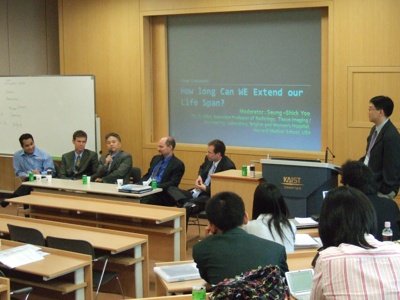 Int'l Conference for Integration of Science & Technology into Society Opens
The 2008 International Conference for the Integration of Science and Technology into Society (ICISTS-KAIST) opened a four-day meeting on Tuesday (July 15) at Daejeon KAIST campus. The conference is an annual event organized by a group of KAIST undergraduate students.
The fifth-year gathering is designed to provide participants with an opportunity to broaden their scientific perspectives by sharing ideas and experiences in related topics, as well as building an international human network. This year"s event has drawn about 200 students from 40 countries.
The centerpiece of the conference is three workshops on the following themes; Human-Robot Symbiotic Society, Neo-brain Science and Trafficmatics. Myung-Ja Kim, former Korean Environment Minister, will appear as a keynote speaker.
In the workshop sessions, two speakers will discuss specific issues and arrive at a tentative conclusion. Participants will have the opportunity to participate in the debate through Q&A for each session.
The first theme "Human-Robot Symbiotic Society" delves into the current trend that robot is being transformed into a perceivable and touchable concept from an abstract one. Guests for the workship include June-Ho Oh, professor at the Department of Mechanical Engineering, KAIST; James Dater, professor at the Department of Political Science, University of Hawaii at Manoa, and Director of the Hawaii Research Center for Future; Michael Pollitt, CEO of Shadow Robot Company; and Steven Dubowsky, professor at the Department of Mechanical Engineering, MIT.
The second theme "Neo-Brain Science" focuses on attempts to shed light on brain from diverse perspectives including psychology, economics and art. Among invited speakers are Prof. Jai-Seung Jung at the Department of Bio and Brain Engineering, KAIST; Prof. Un-Jung Kang at the University of Chicago Medical Center; and Peter Geyer, a consultant for the Association for Psychological Type.
The third workshop on "Traffimatics" will deal with "intelligent transport systems (ITS)" which will discusst new paradigm in transportation policy and traffic engineering. On the list of speakers are Assaf Biderman, assistant director, SENSEable City Laboratory, MIT; Prof. Richard Tay, at the Department of Civil Engineering, University of Calgary; Prof. Shoshi Mizokami at Kumamoto University; and Ho-Jong Baik, research associate professor of Virginia Tech.
2008.07.16 View 21675
Int'l Conference for Integration of Science & Technology into Society Opens
The 2008 International Conference for the Integration of Science and Technology into Society (ICISTS-KAIST) opened a four-day meeting on Tuesday (July 15) at Daejeon KAIST campus. The conference is an annual event organized by a group of KAIST undergraduate students.
The fifth-year gathering is designed to provide participants with an opportunity to broaden their scientific perspectives by sharing ideas and experiences in related topics, as well as building an international human network. This year"s event has drawn about 200 students from 40 countries.
The centerpiece of the conference is three workshops on the following themes; Human-Robot Symbiotic Society, Neo-brain Science and Trafficmatics. Myung-Ja Kim, former Korean Environment Minister, will appear as a keynote speaker.
In the workshop sessions, two speakers will discuss specific issues and arrive at a tentative conclusion. Participants will have the opportunity to participate in the debate through Q&A for each session.
The first theme "Human-Robot Symbiotic Society" delves into the current trend that robot is being transformed into a perceivable and touchable concept from an abstract one. Guests for the workship include June-Ho Oh, professor at the Department of Mechanical Engineering, KAIST; James Dater, professor at the Department of Political Science, University of Hawaii at Manoa, and Director of the Hawaii Research Center for Future; Michael Pollitt, CEO of Shadow Robot Company; and Steven Dubowsky, professor at the Department of Mechanical Engineering, MIT.
The second theme "Neo-Brain Science" focuses on attempts to shed light on brain from diverse perspectives including psychology, economics and art. Among invited speakers are Prof. Jai-Seung Jung at the Department of Bio and Brain Engineering, KAIST; Prof. Un-Jung Kang at the University of Chicago Medical Center; and Peter Geyer, a consultant for the Association for Psychological Type.
The third workshop on "Traffimatics" will deal with "intelligent transport systems (ITS)" which will discusst new paradigm in transportation policy and traffic engineering. On the list of speakers are Assaf Biderman, assistant director, SENSEable City Laboratory, MIT; Prof. Richard Tay, at the Department of Civil Engineering, University of Calgary; Prof. Shoshi Mizokami at Kumamoto University; and Ho-Jong Baik, research associate professor of Virginia Tech.
2008.07.16 View 21675 -
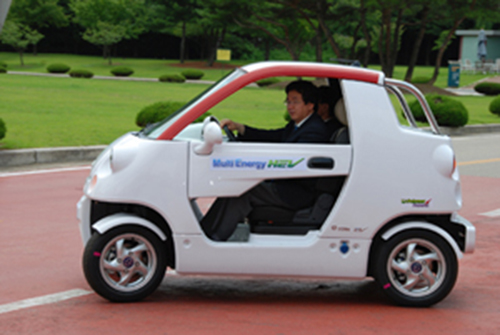 KAIST, CT&T Develop Multi-Energy Hybrid Electric Car
KAIST exchanged a memorandum of understanding for the development and production of a multi-energy plug-in hybrid electric car (ME-PHEV) with CT&T, an electric car maker, on Monday (June 30).
The ME-PHEV is a new vehicle model incorporating a small electric generator and solar energy as power source with conventional plug-in hybrid electric vehicle with rechargeable batteries. The new vehicle has been jointly developed by a research team led by Profs. Soon-Heung Chang and Yong-Hoon Chung, at the department of nuclear and quantum engineering, KAIST, and CT&T.
The ME-PHEV features an increased mileage, improved battery durability and better passenger convenience compared to conventional hybrid vehicles. The joint developers have applied for domestic and international patents.
Prior to the MOU signing ceremony, Prof. Chang, who is also a vice president of KAIST, had a trial ride of the vehicle for the media at the KAIST campus.
"Major car makers of the world currently focus on developing hybrid electric vehicles with battery and internal combustion engine. Compared to these cars, the ME-PHEV offers advantage in terms of reduced air pollution and lowered production costs," said Prof. Chang.
Under the agreement, CT&T will put the features of ME-PHEV into e-Zone, the company"s city-class, low-speed electric vehicle model, with a schedule go into commercial production of the car next year.
2008.07.02 View 17049
KAIST, CT&T Develop Multi-Energy Hybrid Electric Car
KAIST exchanged a memorandum of understanding for the development and production of a multi-energy plug-in hybrid electric car (ME-PHEV) with CT&T, an electric car maker, on Monday (June 30).
The ME-PHEV is a new vehicle model incorporating a small electric generator and solar energy as power source with conventional plug-in hybrid electric vehicle with rechargeable batteries. The new vehicle has been jointly developed by a research team led by Profs. Soon-Heung Chang and Yong-Hoon Chung, at the department of nuclear and quantum engineering, KAIST, and CT&T.
The ME-PHEV features an increased mileage, improved battery durability and better passenger convenience compared to conventional hybrid vehicles. The joint developers have applied for domestic and international patents.
Prior to the MOU signing ceremony, Prof. Chang, who is also a vice president of KAIST, had a trial ride of the vehicle for the media at the KAIST campus.
"Major car makers of the world currently focus on developing hybrid electric vehicles with battery and internal combustion engine. Compared to these cars, the ME-PHEV offers advantage in terms of reduced air pollution and lowered production costs," said Prof. Chang.
Under the agreement, CT&T will put the features of ME-PHEV into e-Zone, the company"s city-class, low-speed electric vehicle model, with a schedule go into commercial production of the car next year.
2008.07.02 View 17049